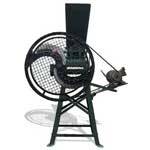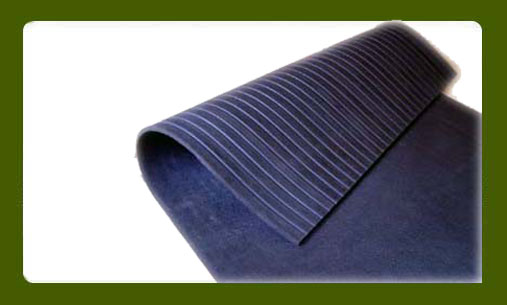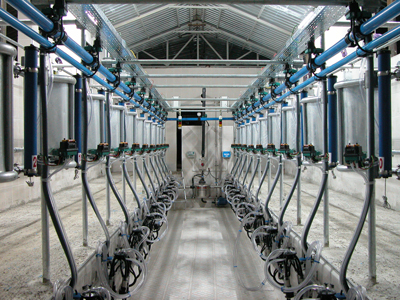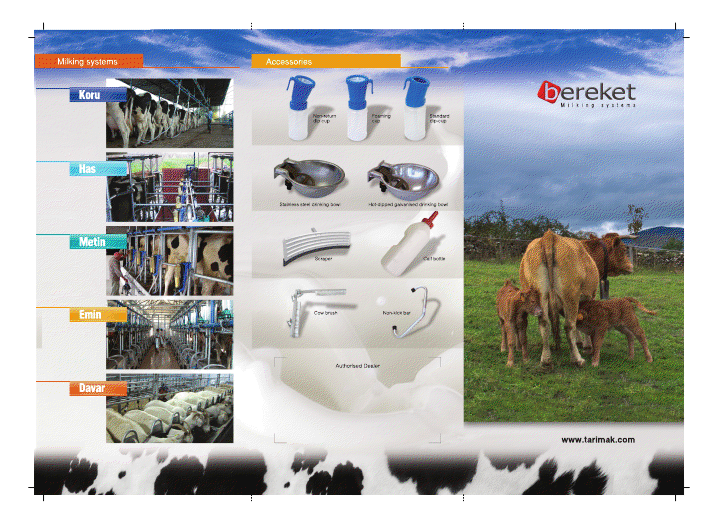First decide how many cows/buffaloes you want to keep.
• Plan the dairy shed with sides open giving good ventilation
• Proper drains to be planned for urine to drain with 1% slope to the floor where cows are standing outside the feeding manger.
• It’s better if you can put cow mats made of rubber in the cow lying area.
• If it’s more than 10 cows it’s better to have a back to back system with a wide passage of at least 6 feet in the centre.
• Plan for vermi composting & organic manure production which can go along with dairy farming without much expenditure
• Learn the feeding methods. Avoid over feeding. Always make water available in front of the cows. Install drinking bowls in front of the cows, connected to the overhead tank.
• Plant fodder. (CO3,Kutirai masal) Have your own fodder land. 1 acre for 8-10 cows is the recommendation.
• Keep dairy shed under good shade or plant shade giving trees around the shed.
• Keep hot dipped galvanized partitions between cows if possible or use good quality GI pipes
• Minimum 25 kg greens per day to cows, hay can be used as filler only.
• Recommending trolley mounted milking machines if its 10 or below, fixed type for 12 or more cows, easy to milk, job will be simplified in fixed type milking systems. Have a DG set back up as you need power during milking time. Machines are there to milk 10 cows at a time, 100 cows in one hour.
• Have plastic/aluminum feeding buckets to give water and feeds. Never mix cattle feed in water. You can soak it in water and it must finally look like dough for dosa. Not at all watery.
Keep in touch!! Happy dairying!!
In starting stage it’s better to keep 10 cows, learn the art of cow farming. Avoid brokers while purchasing cows. Avoid farms too. Imagine i have a farm and you are coming to buy cows. I will give the cows which are non productive or having some incurable disease. Better to go with a reliable farmer friend who knows how to select cows. A fat cow may not give good milk I mean more quantity. Good cows are available at kaverippattinam village near krishnagiri /near dharmapuri a place called kariamangalam, Bangalore- Salem route. You may have to negotiate hard. See the cow you would like to buy getting milked for 3 times continuously. Get information about the feeds given too by them
You need a cow shed with sloped floor towards the back of the cow. A mild slope for the water to drain (say 1 %). If slope is too much, it will be dangerous for cows, human beings and for pregnant cows. A cow needs a standing place of 2 meter length and 4 feet width apart from the feeding manger in front of the cow 1/2 metre.The feeding manger should be in the shape of the alphabet ‘C’ turned to the left.
You don’t need any special permission from any govt body to start dairy farm. The building (cow shed) needs building permit as per your plan from the local panchayat. There is absolutely no harm in using machines. You will get good, clean, hygienic milk without froth from the machine.
For 10 cows if you need a single can machine with oil free vacuum pump and oil free pneumatic pulsator. 1 or 2 people can manage.
Having a bulk milk cooler is a good idea because milk will not get spoiled. (Not recommended for 10 cows). But if you have the facility to sell the milk as soon as it is milked, you don’t have to spend money for buying a cooler. Please do not buy local coolers, buy it from reputed companies only.
Milking machines normally works on electricity and it has a milking can with 30 litre capacity. Buy only good machines with pneumatic oil free pulsator and vacuum pump. We are in that business. It’s better to have generator back up as during milking time you need power back up. Never buy machines with old /outdated technology which works with the sound of a steam engine in today’s world. Make sure it presses only two teats (pulsation in opposite teats, one in the front and another at the back) and not pressing all the four teats which is technically wrong thing to do, how we milk our cow with both hands.
Money is there from the front of the cow ( milk) and back of the cow ( cow dung conversion to organic manure or vermi compost with earthworms- you make vermi compost by leaving good earth worms- its having good demand in places where vegetable cultivation/flowers/coconut/where ever is there chemical fertilizer is used.)
Maintaining buffaloes is good but not recommended for beginners. Keep cows, learn the art of dairying, and then you can venture into buffaloes. They yield less compared to cows, but as the fat percentage in milk is more you may get more money for their milk per litre cost. (Buffalo curd is tastier).
When they become old you dispose it off or give it to some goshala. When they are dry, inseminate them if they are in good health. For any cow dry period is there.
Milking parlour (suitable for larger herds) means milker will be standing in a pit and cows will stand in a platform and the milk from its udder will get collected in a SS pipe in the centre / side of the pit and falls finally to a bulk milk cooler or collecting vessel. No milking cans will be there. Milker will be standing in a pit in the centre or the sides. Milk from the udder of the cow will go the milk cooler untouched by hand. The milk given by each cow can be measured using milk meters installed in the SS pipeline. You can measure and record the yield of each cow when you do it this way but it’s expensive. You need a small trolley machine with 30 litre can cluster assembly with oil free pneumatic pulsator. With one can you should be able to milk 10 cows in one hour. For cleaning milking equipment like milking cans you need acid and alkaline detergents. Soap is ruled out as milk will get the smell of soap. Try visiting www dot tarimak dot com
I am importing machines from turkey which is ISO certified and manufactured as per European norms. You may consult a chartered accountant who has experience in preparing agri project reports. I visited turkey last year to learn more on dairy farming.
Drinking bowl fixed in front of the cow, bowl made of SS, ensures that your cow gets good clean drinking water whenever it needs, from the overhead tank. Water starts flowing when cow puts it head inside by the lower jaw of the cow pressing the lever inside the water bowl. A good cow requires about 100 litres of water a day.
Calf bottle- for calves, you can feed required quantity of milk through the feeding bottle. It’s better to avoid leaving the calves for drinking milk from the cow’s udder as it may bite and injure the cow. If pain is there cow will not give you milk.
With Chaff cutter you can cut CO3 grass (which grows up to 7 feet height, may be more too) to small pieces. For 10 cows hand driven is more than enough.
I am recovering from an accident which left me paralyzed for more than a year. I am slowly recovering from the accident. I can walk now, moving around in my car.
Keep in touch.
Regards
Murali Krishnan
Sri Vinayaka Agencies
Karunamadhavam
opposite Medical college high school
Medical college Post
Trivandrum-695011.
Tel:0471-6547288








